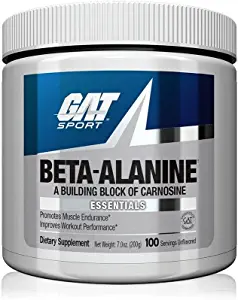Introduction
In the world of fitness, there’s an ongoing debate about the most effective training approach: high weight, low repetitions (reps) versus low weight, high reps. This article will delve into the pros and cons of each method, and help you determine which strategy aligns best with your fitness goals.
High Weight, Low Reps
Benefits
- Increased Strength: Training with heavy weights and lower reps stimulates the development of muscle strength by recruiting more motor units and muscle fibers.
- Greater Muscle Mass: Lifting heavy weights places significant stress on your muscles, which may promote hypertrophy (muscle growth) when combined with proper nutrition and recovery.
- Enhanced Neural Adaptations: High-weight, low-rep training improves neuromuscular efficiency, allowing you to generate more force and lift heavier weights over time.
Drawbacks
- Increased Injury Risk: Training with heavy weights can lead to a higher risk of injury if not executed with proper form and technique.
- Longer Recovery Time: Intense heavy lifting sessions may require more extended recovery periods between workouts, potentially affecting training frequency.

Optimum Nutrition Beta-Alanine, Unflavored, 7.15 Ounce,Powder
Low Weight, High Reps
Benefits
- Improved Muscular Endurance: High-rep, low-weight training focuses on enhancing muscular endurance, allowing you to perform more extended sets and maintain a higher training volume.
- Better Cardiovascular Fitness: Low-weight, high-rep training often involves shorter rest periods, increasing the heart rate and improving cardiovascular fitness.
- Reduced Injury Risk: Training with lighter weights and higher reps typically carries a lower risk of injury due to reduced stress on joints and connective tissues.
Drawbacks
- Slower Strength Gains: Low-weight, high-rep training may not generate significant strength gains compared to heavy lifting.
- Less Muscle Mass: High-rep training may result in less muscle hypertrophy compared to heavy lifting, particularly in advanced lifters.

GAT Sport Beta Alanine Supplement, 200 Gram
Which Training Approach is Best?
The most effective training approach depends on your individual goals and preferences:
- Strength and Muscle Mass: If your primary goal is to build strength and muscle mass, a high-weight, low-rep approach may be more suitable for you.
- Endurance and Cardiovascular Fitness: If you’re looking to improve muscular endurance and cardiovascular fitness, a low-weight, high-rep approach may be a better fit.
- General Fitness and Health: For overall fitness and health, incorporating a mix of both high-weight, low-rep and low-weight, high-rep exercises can provide well-rounded benefits and keep your workouts engaging and diverse.
Conclusion
There’s no one-size-fits-all answer when it comes to the high weight, low reps vs. low weight, high reps debate. The most effective training strategy depends on your specific goals, preferences, and experience level. By understanding the benefits and drawbacks of each approach, you can create a personalized workout routine that aligns with your objectives and helps you achieve the best results.
FAQs
- Is it better to do high-weight, low-rep or low-weight, high-rep exercises for fat loss?
Both methods can aid in fat loss when combined with a calorie-controlled diet. However, high-intensity workouts that incorporate both heavy weights and cardiovascular components may be more effective at burning fat.
- Can I combine high-weight, low-rep and low-weight, high-rep exercises in the same workout?
Yes, you can mix both methods in your workout routine. This approach is known as “periodization” and can help prevent plateaus, improve overall fitness, and keep your workouts interesting.
- How many reps should I perform for high-weight, low-rep training?
For high-weight, low-rep training, the typical rep range is between 1 and 6, with a focus on lifting heavier weights that challenge your muscles.
- How many reps should I perform for low-weight, high-rep training?
For low-weight, high-rep training, the typical rep range is between 12 and 20, with a focus on lighter weights that allow you to maintain proper form and control throughout the set.
- How often should I switch between high-weight, low-rep and low-weight, high-rep training?
The frequency of switching between the two training methods depends on your goals and workout routine. Some athletes switch every few weeks, while others may alternate methods within the same week or even within the same workout session. Experiment to find what works best for you and your specific needs.
